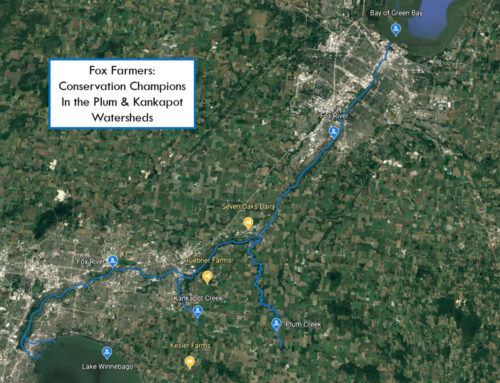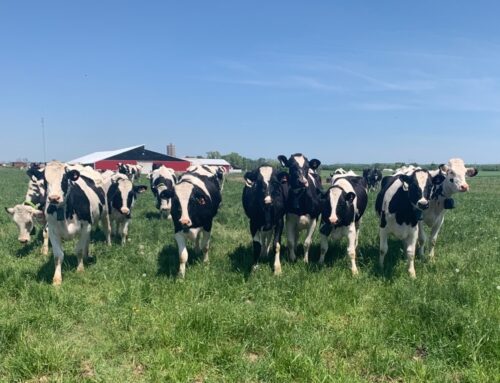Preparing Soil for Battle
Using no-till planting and soil armor to combat erosion.
Article written by: Andy Kiefer, Outagamie County Land Conservation
Each year, thousands of cropland acres are conventionally tilled to prepare a seedbed for planting in the Lower Fox watershed. This conventional system, utilizing spring and fall tillage, has been the most common practice for growers to use in the Lower Fox for decades because of the success they can achieve. However, with bare soils after planting, this system leaves cropland vulnerable to soil and nutrient losses. A system that drastically reduces cropland’s susceptibility to soil loss is no-till farming, which essentially eliminates tillage from a cropping system. In the past, this style of farming was never favorable in the Lower Fox region because of heavier soils and wet springs, which made it difficult for growers to have success with no-till and it simply wasn’t worth the risk of yield loss. With continued education, innovation and technology with no-till equipment; some growers in the Lower Fox are beginning to have success with no-till. With these successes and cost savings by reducing tillage passes there has been an increasing interest in no-till planting. Today there are a number of planter attachments and setups on the market. One challenge growers face with no-till is finding the right planter attachments and technology to have success on their farm while keeping investment costs low and managing residue from cover crop or prior crops.

Conventional planting. Disturbed, bare soil left after planting.
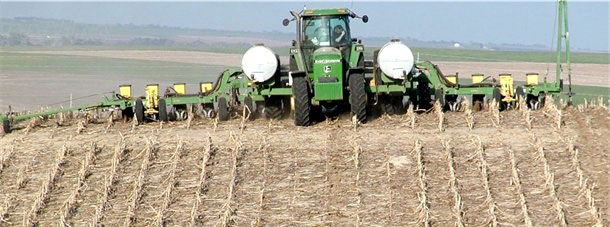
No-till planting. Undisturbed soil and residue from the previous crop helps to protect the soil surface.
To combat challenges of no-till adoption, Outagamie County, through a grant with the Fox-Wolf Watershed Alliance and the Environmental Protection Agency, was able to purchase a 6 row conventional corn planter that will be converted to a no-till planter. In addition to the planter, a number of different attachments were purchased. Outagamie has plans to work with growers in the Plum and Kankapot Creek Watershed to demonstrate no-till planting and the different available attachments on their farms. The demonstration will be able to show growers no-till can be successful with the appropriate setups and help a grower decide which no-till setup to invest in if they choose to adopt no-till practices. The planter demonstration will reduce any challenges, concerns or risk a grower may face when adopting no-till.
A new planter attachment to the no-till arena that Outagamie County has purchased is Dawn Biologic’s ZRX rollers. Initially developed by a no-till farmer, the ZRX rollers attach to the front of planter and are designed to roll down large over wintering cover crops while creating a zone for the planter to place a row of seed. The rolled cover crop creates a thick mulch layer which acts as a soil armor, protecting the soil from direct sunlight and the impact of rain. With the cover crops roots system intact and a thick armor, the susceptibility of soil erosion and nutrient loss are drastically reduced. An additional benefit of the large cover crop is the decrease in weed germination and the biomass will decay into soil organic matter, an important piece for soil health and sustainability.
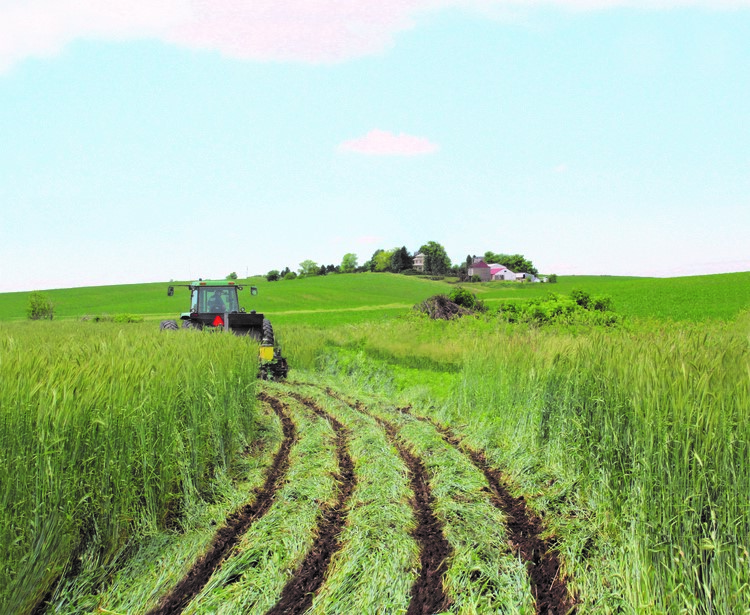
Planting into a tall winter rye cover crop with Dawn Biologic’s ZRX rollers. Note the thick mulch armor and planting zone that was created.
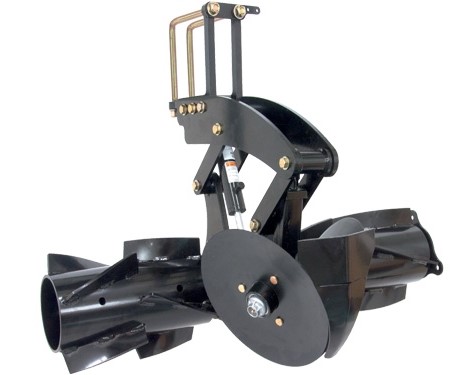
Dawn Biologic’s ZRX roller attachment.
Outagamie County believes that the purchase of the planter and attachments will serve as a important addition to the Plum and Kankapot watersheds to promote no-till practices, soil conservation, and in return improve the success of the farmer and water quality.



